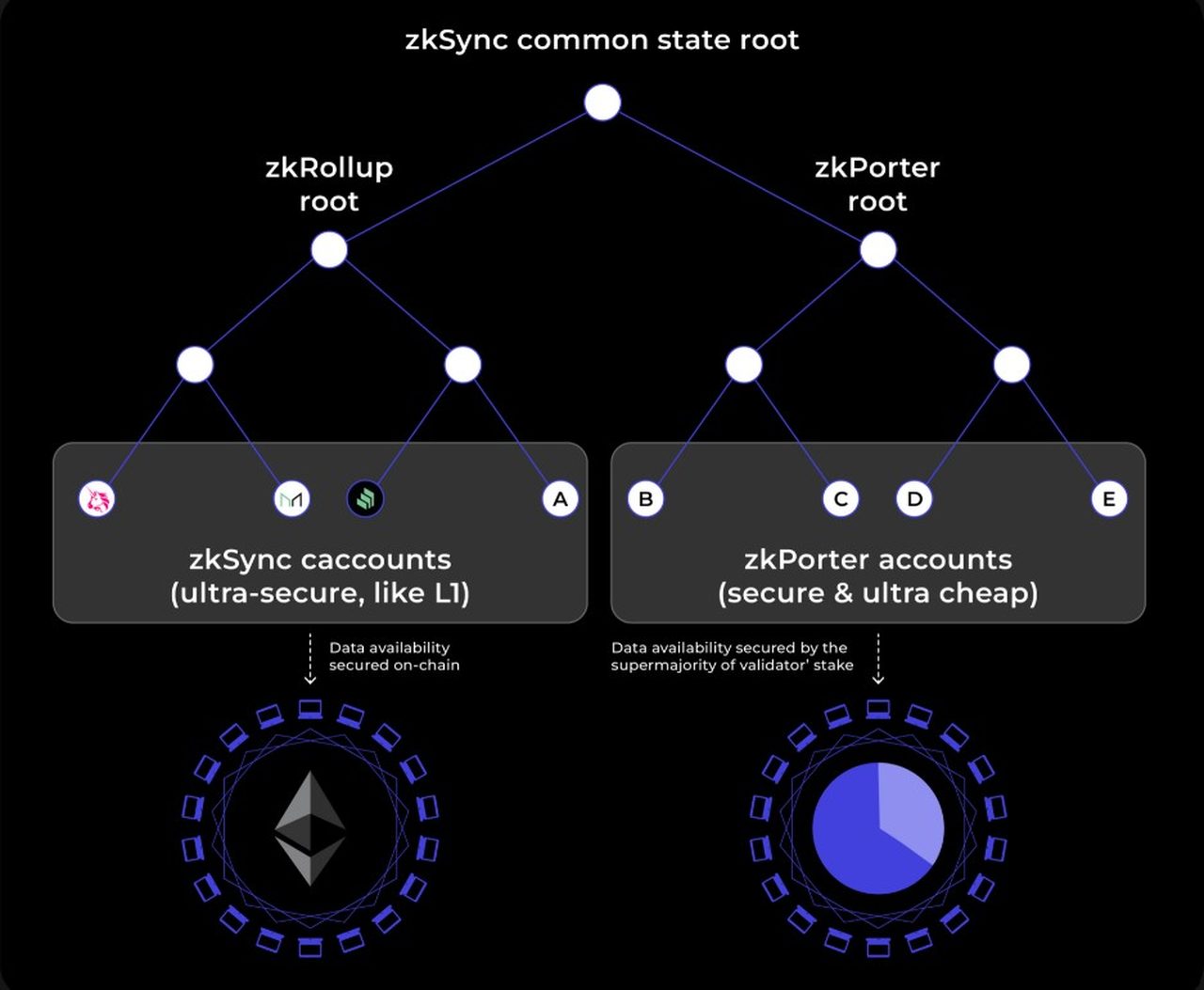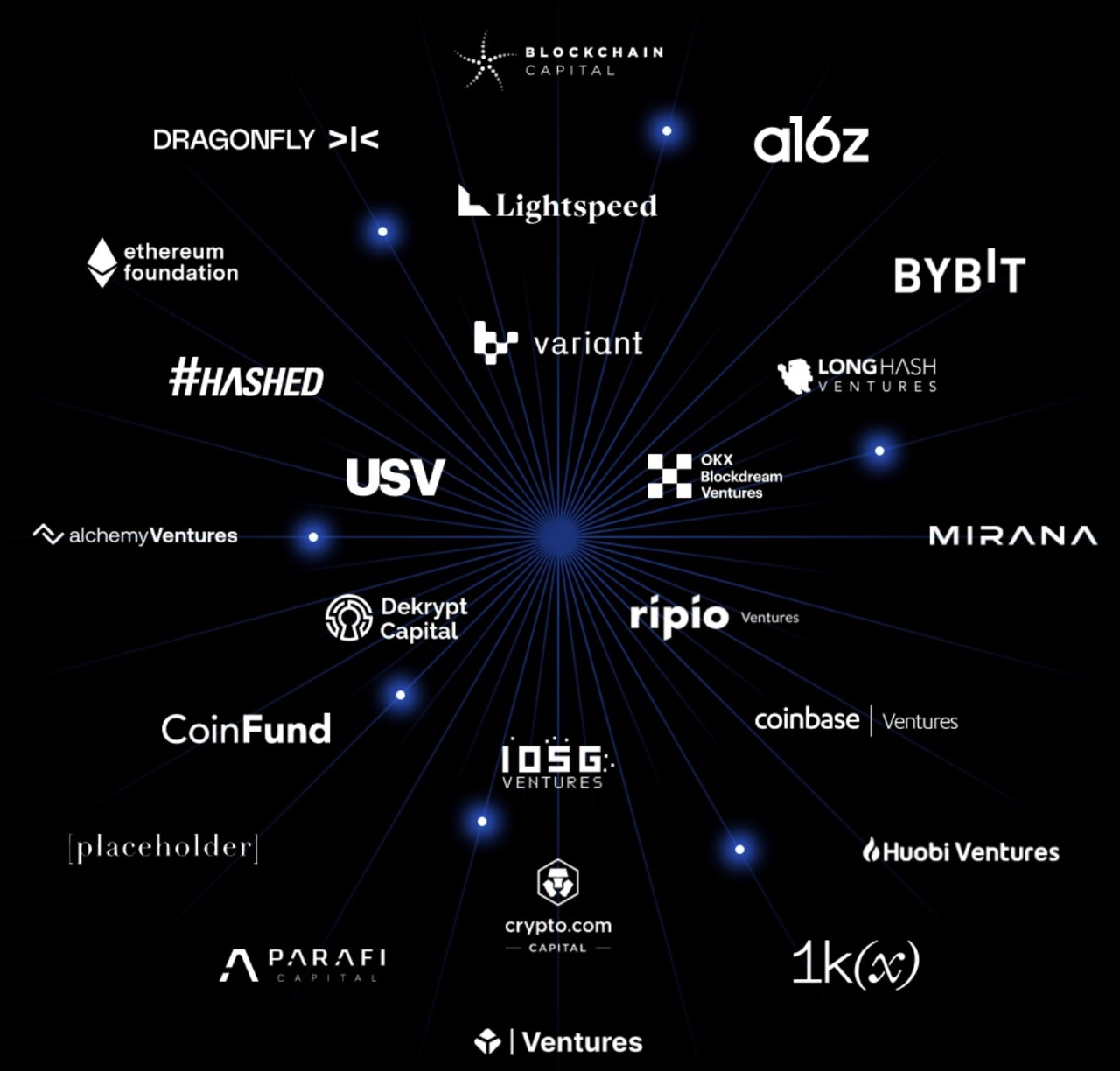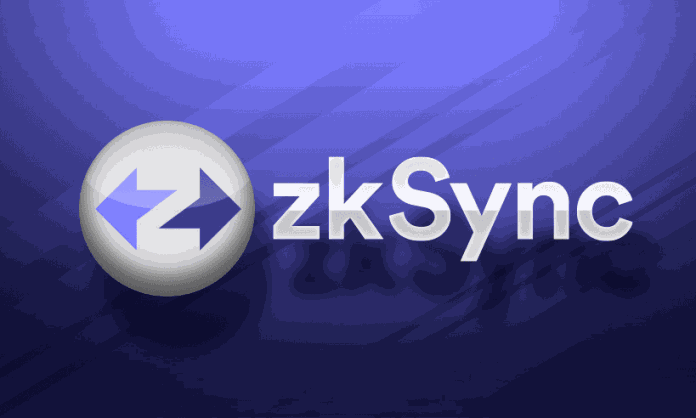Layer 2 blockchains are growing daily; we have seen the explosion of outstanding Layer 2 projects such as Arbitrum and Optimism… and there is a Layer 2 that promises equal potential, zkSync. So have you heard about zkSync yet? Read the article below to get the best overview of this L2!

What is zkSync?
zkSync is a layer 2 of Ethereum based on Zero Knowledge (ZK) Rollup technology, which is a trusted Layer 2 for low-cost payments that accelerates transactions, scalability, and privacy from Ethereum.
This is a product of Matter Labs. For this product, Matter Labs is user-centric with the main purpose of security, and improving user and developer experience. Matter Labs is driving the development of zkSync 2.0 in the direction of supporting arbitrary smart contract capabilities through Solidity and Zinc and significantly enhanced processing through zkPorter – a protocol that combines zkRollups and sharding, achieving more than 20,000 TPS (transactions per second) or more.
With such orientations, Matter Labs promises to make layer 2 zkSync the main payment method of Ethereum and a web 3 gateway to connect users, wallets, services, Dapps, and exchanges.
Remarkable features
zkSync is a layer 2 that helps provide a scalable solution for Ethereum and helps preserve Ethereum’s foundational values of freedom, self-sovereignty, and decentralization – at scale. Thanks to these features, users can bypass the barriers between tiers, new addresses, and other barriers to sending money through zkSync.
The main design focus of zkSync is the experience for users and developers, making zkSync the most exciting platform on Ethereum. The creators are trying to find solutions to reduce costs, improve the user experience of e-wallets and other services, and improve DeFi. zkSync also makes the confirmation need for a third party for fast transactions with a 99% cost reduction, and it also makes it possible for payments to go to existing and smart Ethereum and existing smart contracts.

zkSync is highly secure due to the core technology of zkRollup, so layer 2 has a combination of cutting-edge cryptography and on-chain data availability, making zkSync the only L2 that doesn’t require any operations to keep money safe. zkSync prevents validators from corrupting the state or stealing funds. Users can still take funds from the zkRollup smart contract when validators stop cooperating. In addition, users and a single trusted third do not need online supervision to monitor zkRollup blocks to prevent fraud. zkSync also makes asset transfer between L1 and L2 smoother with an extremely fast time of about 10 mins.
As a result of the developer’s efforts to improve technology, zkSync can easily integrate with applications and smart contracts available on Ethereum and has EVM compatibility through zkRVM, making it easy for developers. Easy to build on zkSync Era in Solidity language. zkSync is an open-source protocol that allows the community to develop and customize according to the needs of each application or project.
The transaction fees of zkSync are also relatively low, specifically:
- Transfer fee: 0.02 USD
Withdrawal fee: $1.59
One-time activation fee: 0.44 USD
Mint NFT: $0.05
How it works
With zkSync, the smart contract on the main chain holds all the funds, while the computation and storage are done off-chain. The main purpose is to “roll up” transactions into a single entry, which will then verify and approve them all at once.
First, the transactions will be signed by the user and sent to the validator; the validator will roll all the transactions into a block and send the cryptographic commit of the new state to the smart contract on the mainnet, with cryptographic proof (a SNARK). In addition, an amount of data per transaction called state will be produced on the main chain network as cheap call data, allowing anyone to reconstruct the state at any time. Smart contracts will verify the proof and state ∆, so the validity of all transactions contained in the block and the availability of block data will be verified. Verification with SNARK makes verification and off-chain state storage costs cheaper than EVM storage, scalability is increased to approximately 100-200 times mainnet capacity, and tx costs are more economical.
Defect
- Centralization: Some users are concerned that zkSync may lead to over-centralization, as the platform’s operation depends on validators or operators. If some important validators are hacked or controlled by a third party, this may affect the security and reliability of zkSync.
- Potential security risks: Although zkSync uses zero-knowledge technology to protect privacy and verify transaction validity, implementing and using complex software and protocols may still pose a security risk. Vulnerabilities and bugs in the source code can be exploited and endanger the system.
- It depends on some stakeholders: zkSync depends on contributions from validators and operators. This dependence can create concerns about the compatibility and reliability of these parties.
- Inaccurate information errors: In some cases, when using zero-knowledge technology, incorrect information errors can occur, where the system gives false results about the integrity of the transactions. This may affect the reliability and accuracy of zkSync.
zkSync Ecosystem
Up to the present time, the zkSync ecosystem is gradually completing hundreds of projects in different fields, with some outstanding projects in such areas as:
- Dex: Mute, Rubicon, MesProtocol, Trustless Finance, ZKEX,…
- Lending & Borrowing: Taker,…
- Perpetual: Increment Finance, Phezzan
- Launchpad: zkSpark
Let’s find more details of projects here
Tutorials using zkSync
You can use zkSync by following these steps:
Step 1: Connect your browser wallet to the zkSync wallet.
Step 2: Fund your accounts and activate them.
Step 3: Transfer money to another zkSync account (optional).
Detailed instructions on how to use the zkSync ecosystem can be found in the official project guide.
Tokens and fees of zkSync
According to the information released by Matter Labs, zkSync’s token could launch in 2024. Therefore, you still have a chance to receive the zkSync Era airdrop by supporting and early use of products and projects of zkSync Era.
Roadmap

zkSync started development in the summer of 2020 and is now in mainnet stage (March 24, 2023) and is working on attracting users into the ecosystem experience
Core team
zkSync was founded by a team of experienced developers of Matter Labs, including two core founders of Matter Labs, Alexandr Vlasov, and Alex Gluchowski. They are all seasoned developers. Alex Gluchowski has almost 20 years of experience, has served as CTO for several technology companies, and co-founded Matter Labs in 2018. Alexandr Vlasov – another Matter Labs co-founder and R&D lead.
Fundraising rounds
To date, ZkSync has received more than $458 million through the following funding rounds:
- July 23, 2019: $2M led by Placeholder Ventures followed by 1kx, Hashed Fund, DragonFly Capital
- March 1, 2021: $6M from Binance, Coinbase, Aave, Curve,…
- August 11, 2021: $50M USD with a16x lead, DragonFly Capital, 1kx, ConsenSys
- Jan 27, 2022: $200M from BitDAO
- November 16, 2022: $200M led by Blockchain Capital and Dragonfly, along with other investors such as Light Speed Venture Partners, Variant, A16z…
Backers & Investors

zkSync has many partners in many areas, such as dex exchange, projects, investment funds, and infrastructure, … these projects have been connected with zkSync Era before and promise to expand more and more to this ecosystem.
Social Media of the project
- Twitter: https://twitter.com/zksync
- Telegram: https://t.me/zksync
- Medium: https://medium.com/matter-labs
- Discord: https://join.zksync.dev/
Summary
In general, zkSync is currently Layer 2, attracting a lot of attention from the community, and this project is increasingly improving in technology and expanding its ecosystem. Learn and experience this ecosystem for yourself to get the best overview.


